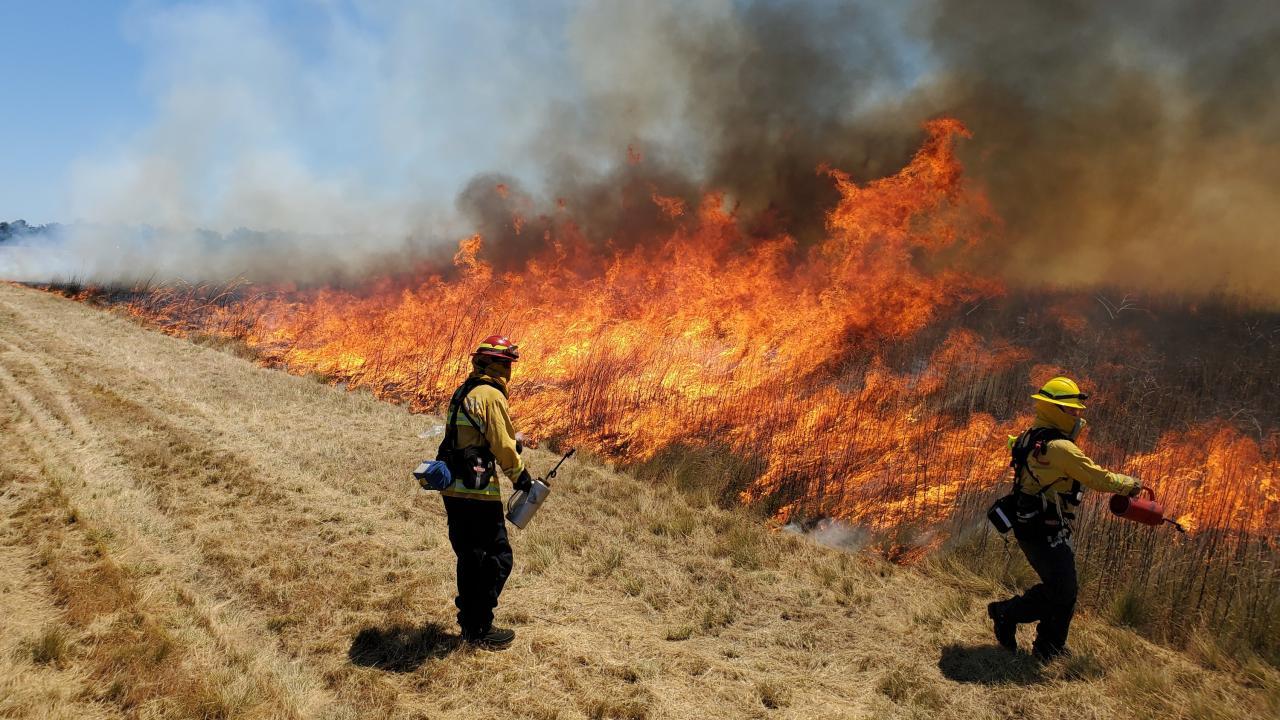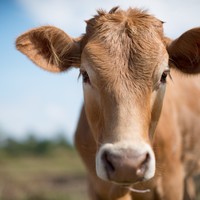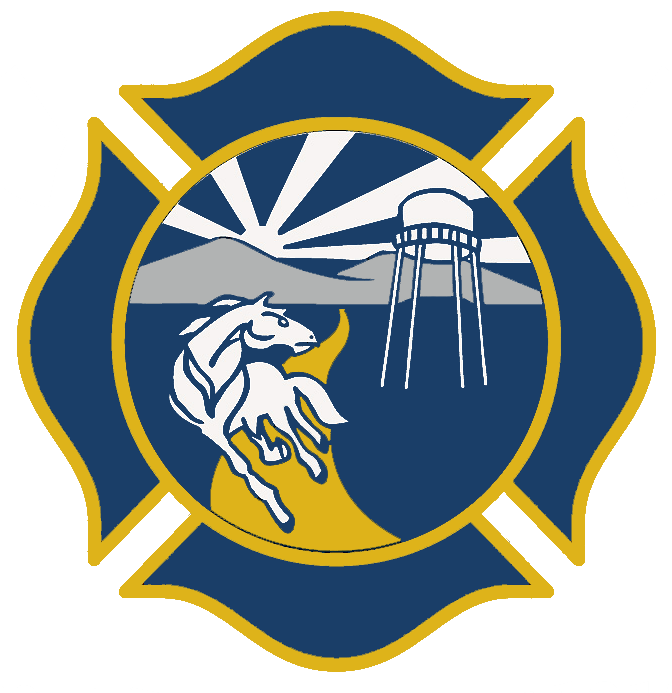
Wildland Fire Training 2020
Video of prescribed campus and regional fire department training opportunity at UC Davis Russell Ranch. These burns help regenerate native grasses while offering first responders the experience of responding to fires during a pandemic.
Just two days after undergoing annual wildland fire training at UC Davis’ Russell Ranch, our Fire Department, and other regional firefighting departments, responded to the largest fire of this year’s early season so far.
On June 2 and 4, the UC Davis Fire Department and other Yolo County fire departments participated in prescribed burn training at Russell Ranch as part of an ongoing partnership with the Arboretum and Public Garden.
“The annual training is really important for practicing things like shelter deployment, progressive hose lay and using gear and apparatus specific for wildland fires before fire season begins and we’re deployed throughout the state,” Fire Chief Nathan Trauernicht said.
Did you know?
 In addition to managing the Russell Ranch grass lands through prescribed burning in partnership with the UC Davis Fire Department, the Arboretum and Public Garden also works with the Department of Animal Science to use cows to regulate grass height. These cows are migrated around the grasslands and given free room and board at Russell Ranch in return for their grazing services.
In addition to managing the Russell Ranch grass lands through prescribed burning in partnership with the UC Davis Fire Department, the Arboretum and Public Garden also works with the Department of Animal Science to use cows to regulate grass height. These cows are migrated around the grasslands and given free room and board at Russell Ranch in return for their grazing services.
This refresher training was almost immediately put to use when the UC Davis Fire Department responded to the Quail Fire — just 15 miles from the training area — on Saturday, June 6. The fire, located east of Vacaville and West of Winters, burned 1,837 acres before full containment on Wednesday, June 10.
The prescribed burn training is not only a valuable resource for local fire departments, but also helps with the management of Russell Ranch’s native grasslands.
“Russell Ranch is home to 380 acres of restored native grass land that acts as foraging habitat for birds like the Swainson’s Hawk and serves as a research area for native species and habitat restoration,” said Andrew Fulks, assistant director of the Arboretum and Public Garden.
An important aspect of managing this habitat is maintaining a specific grass height best suited to the native wildlife—a big task for a space that large. Just mowing the grass would require large amounts of fossil fuels, so J.P. Marié, Manager of the Putah Creek Riparian Reserve, sought out a better solution.
“We looked into implementing prescribed burning but were unable to do it on our own, so we reached out to the UC Davis Fire Department,” Marié said. “The partnership allowed us to use a more sustainable and effective habitat management technique, while also providing the fire fighters a good training opportunity.”
This partnership evolved into an annual training for fire departments across Yolo County and has proven to be amazing for the habitat.
“Prescribed burns stimulate native perennial growth while burning non-native grasses and their seeds,” Marié said. “We’ve really been able to see a difference in the areas we’ve burned; they thrive the year after.”
Video of prescribed campus and regional fire department training opportunity at UC Davis Russell Ranch. These burns help regenerate native grasses while offering first responders the experience of responding to fires during a pandemic.
This year, the training worked a bit differently in accordance with public health standards. Fewer fire departments trained simultaneously; instead they worked on a staggered schedule in order to practice physical distancing.
“Emergency operations for the fire department remain onsite and continue to respond to fires during the pandemic, so we’ve followed health protocols like physical distancing, wearing face coverings and providing hand sanitization,” Chief Trauernicht said. “The training gave us a chance to implement that in a wildland fire situation.”
UC Davis Fire Department and the Arboretum and Public Garden plan to continue the annual training
“I think this year really underscored the value of this partnership,” Fulks said. “When it comes to fire, we’re all in this together.”
